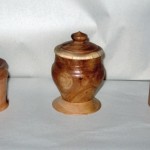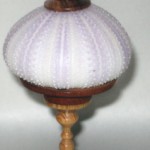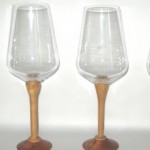By now you should have a basic idea of how to make money on the side. Go here to refresh your memory with the basic principles, go here to find out which jobs suit you, and then go here to learn about finding clients. I’ll bring the elements together in this case study.
First, I’ll review my progress by year, then give a breakdown on successes and failures. Finally, I’ll show you how to shorten the process and concentrate on the areas that will make you profitable quickly.
Chosen Niche:
I do woodturning as a hobby. Its an expensive pastime, not as costly as womanizing or gambling but it can be pricey. The learning curve is steep and sometimes deadly. There are some benefits. First, the learning curve is steep and sometimes deadly which acts as a barrier to all and sundry entering the market. Secondly, there are less than 20 woodturners in the country, so competition is low. Thirdly, The Bahamas receives more than 3 million tourists per year. The majority of those will buy mass-produced (spelt: C-H-E-A-P) souvenirs that are made in China. A minority of visitors will go to the extra effort of finding Bahamian made craft items. Even during the height of the recession that minority will spend on high quality goods.
If there is a downside to all of this, it’s the fact that it takes work to get into the high end market.
Chronology
2005– I take some poorly made items to a high end furniture store and offer them for next to nothing. The owner looks at them in amusement and declines. He tells me that most of his customers are concerned with uniformity and price. Pricing my woodturnings so low does not make good business sense.
He suggests that I contact art galleries and try to build a market by personalizing (short bio, wood used, type of finish, etc) my work. The information he gives is more important than any money I could have made if he had accepted my offer. It will take me another three years to see the wisdom of his words. I continue to try and make money at the low end of the market where there is more competition and less money.
2006 – I buy better tools and spend more time in practice. By Googling woodturning, I come across an idea that will become my best selling item.
I talk to lots of people about ‘business’ but make no move towards having one. Note: Talking about business is like talking about sex. The theory is vastly different from the practice. I spend most of the year learning P.U.A techniques. They are just as useful in business as they are in dating but I don’t know this at the time.
2007 – I begin the year by contacting several gift shops who are willing to take a chance and give me some shelf space. With four gift shops carrying my work, I feel that I’m on my way to success, fame and fortune. I am very wrong, in two years most of these shops will close due to the Great Recession.
2008 – Money is trickling in from the gift shops and I feel good. The train wreck that is the recession is hurtling towards me but like many others I’m oblivious.
2009 – Three gift shops close and the fourth has an incredibly slow turnover.
Luck lends a hand.
I give a gift box to Mr. Cheney who does maintainance on my chainsaw. He shows it to Robin Hardy an established woodturner. Mr. Hardy and I meet and talk wood. Later in the year, he invites me to take part at Jollification, the largest Christmas craft fair in the country. It is frequented by the Old Money crowd.
My house is broken into the day after Jollification starts. While waiting for the police I lose half a day at Jollification but still manage to make $245 on the sale of boxes, snow men and ornaments. I share a stall with Dave McGoran who specializes in custom built furniture. From him I learn that I need better accounting techniques.
2010– Get my work into the gift shop of the Bahamas National Art Gallery. I spend the year going on art tours and gallery openings and get to know some of the best artist in The Bahamas on a first name basis. When I finally get around to asking some of the gallery owners if they will carry my work, the answer is always yes (P.U.A’s be praised!)
At the urging of my Entrepreneurial Mastermind group, I create a questionnaire for customers which I will use at Jollification. At Jollification I introduce a new item and make $409 in sales.
A high end gift shop buys $112 worth of goods and promptly marks everything up by 100 to 500 percent!
2011 – I begin working at the end of October. I try to spend 90 minutes to 21/2 hours in the workshop daily. I take 10 days off from work to get ready for Jollification. Some of those day I spend less than 1 hour in the workshop but more than 5 hours playing Sniper Elite.
I make $470 at Jollification. Total sales between November 19th and December 25th is $770. Gift stores sell another $130 worth of product by May 2012 and an additional $110 worth is sitting on their shelves.
In Part Two I’ll break down lessons learned.



